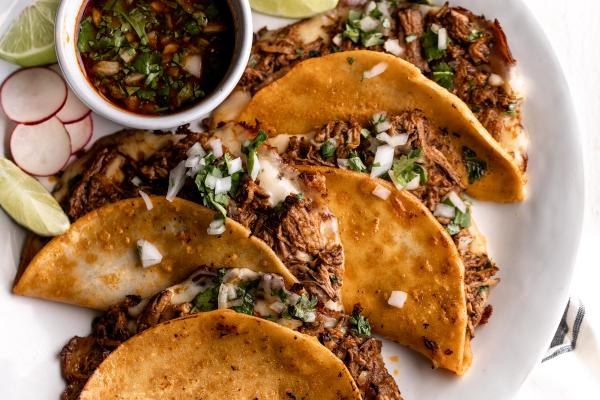Tokyo Food Tour 2025: My Stomach Has Never Been Happier (or Fuller!)#
Okay, let's be real. I basically planned this entire trip to Japan around one thing: eating. Tokyo, the legendary culinary beast, was my main target. Forget temples for a second (okay, maybe not entirely), my pilgrimage was dedicated to the holy trinity: life-altering sushi, soul-warming ramen, and the glorious chaos of Japan street food. This wasn't just a vacation; it was a full-blown Tokyo food tour, meticulously (and greedily) plotted out. I arrived armed with recommendations, an empty stomach, and frankly, unrealistic expectations. Spoiler alert: Tokyo exceeded them.¶
I landed, jet-lagged but buzzing, and my first real meal? A steaming bowl of shoyu ramen tucked away in a tiny Shinjuku alleyway. The rich broth, the springy noodles, the melt-in-your-mouth chashu pork... it was a revelation. That first slurp set the tone for the entire trip. Get ready, because I'm about to spill all the delicious details.¶
Why Tokyo's Food Scene is Mind-Blowingly Good#
Tokyo isn't just a food city; it feels like the food city. It has more Michelin stars than anywhere else, sure, but it's the sheer diversity and dedication to craft at every level that gets you. From basement depachika food halls overflowing with gourmet goodies to generations-old soy sauce makers and neighbourhood noodle joints, there's an obsessive pursuit of perfection.¶
The food culture here is deeply rooted in seasonality. What's fresh right now dictates menus, especially for sushi. Geography plays its part too – being an island nation means incredible seafood access, influencing everything from casual izakaya fare to high-end kaiseki meals. Food isn't just sustenance; it's an art form, a cultural pillar, and a daily obsession.¶
The Sushi Quest: Beyond Anything I'd Tasted Before#
My sushi travel Japan dreams centred on Tokyo, the birthplace of Edomae-style sushi. Forget drowning rolls in soy sauce and wasabi paste (though, hey, you do you). Here, it's about pristine fish, perfectly seasoned rice, and the chef's delicate touch. My first major stop? The legendary Tsukiji Outer Market.¶
Pro Tip: Get to Tsukiji Outer Market early-ish (like 8-9 AM) to beat the worst crowds but still catch the buzz. And maybe don't wear your best white sneakers... lesson learned the hard way navigating fishy puddles!
Wandering through Tsukiji's bustling lanes, past stalls selling giant tuna collars, fresh wasabi root, and glistening rows of seafood, was sensory overload in the best way. I ended up at Sushi Dai, bracing for the infamous queue. Was it worth the 2-hour wait? Absolutely. Each piece, from the creamy uni (sea urchin) to the subtly sweet hotate (scallop) and the rich otoro (fatty tuna), was a masterpiece. The rice was slightly warm, the fish melted on my tongue... it cost about ¥5000 (around $35 USD) for the Omakase set, and honestly? Priceless.¶
Sushi Spots to Consider:#
- Tsukiji Outer Market Stalls: For casual, quick, and incredibly fresh sushi breakfasts. Wander and see what looks good!
- Ginza Kyubey: High-end, iconic sushi experience. Reservations essential, prepare for a splurge (¥15,000+ / $100+).
- Neighborhood Sushi-ya: Look for small, unassuming spots away from tourist hubs. Often the best value and most authentic vibe. I stumbled into one near Ueno station (lost the name, typical!) and had an amazing ¥3000 ($20 USD) lunch set.
Ramen Rundown: Finding My Perfect Bowl in Tokyo#
Oh, Tokyo ramen. Where do I even begin? The sheer variety is staggering. Forget instant noodles; this is an art form. I made it my mission to try as many different styles as possible. My strategy? Ask locals, follow the queues, and embrace the vending machine ordering system (surprisingly efficient once you figure it out!).¶
One standout was Ichiran Ramen. Yes, it's a chain, but the 'flavor concentration booth' experience is uniquely Japanese, and their classic tonkotsu (pork bone broth) is consistently delicious and customizable (around ¥1500 / $10 USD with extras). For something different, Afuri's Yuzu Shio ramen, with its light, citrusy broth, was a refreshing change of pace, especially their Ebisu location.¶
Slurping your noodles isn't just acceptable in Japan; it's encouraged! It supposedly cools the noodles and enhances the flavor. So slurp away with confidence!
Ramen Styles I Tackled:#
| Style | Broth Base | Typical Toppings | Vibe | My Impression |
|---|---|---|---|---|
| Shoyu | Soy Sauce | Chashu Pork, Menma, Nori, Egg | Classic, Ubiquitous | Comforting, savoury baseline |
| Shio | Salt | Chicken/Pork, Vegetables, Seafood | Lighter, Delicate | Subtle but complex, surprisingly flavourful |
| Miso | Fermented Soybean Paste | Corn, Butter, Bean Sprouts, Minced Pork | Rich, Hearty (often from Hokkaido) | Warming, robust, great in cooler weather |
| Tonkotsu | Pork Bone (simmered for hours) | Chashu, Kikurage Mushrooms, Pickled Ginger, Egg | Creamy, Intense, Rich | Decadent, stick-to-your-ribs goodness |
Hitting the Streets: A Japan Street Food Frenzy#
You can't talk Tokyo food without diving headfirst into Japan street food. This is where you find pure, unadulterated deliciousness, often for just a few hundred yen. I honestly think I might have eaten my weight in various fried, grilled, and sweet things.¶
Street Food Hotspots You CANNOT Miss:#
- Ameya Yokocho (Ameyoko) Market (Ueno): A whirlwind of sights, sounds, and smells. Think grilled squid, fresh fruit skewers (those giant strawberries!), takoyaki (octopus balls – careful, they're molten lava inside!), and various unidentifiable but tasty fried things. Budget: ¥200-¥800 ($1.50-$5.50) per snack.
- Yanaka Ginza (Nippori): A charming, old-school shopping street. Famous for its menchi katsu (fried meat cutlet), sweet potato snacks, and traditional crafts. More relaxed vibe than Ameyoko.
- Harajuku (Takeshita Street): Yes, it's known for crazy fashion, but also for epic crepes piled high with fruit, cream, and cheesecake (yes, cheesecake!). Also find giant rainbow cotton candy and Korean-style cheese hot dogs.
- Omoide Yokocho ('Memory Lane', Shinjuku): Tiny alleyways packed with smoky yakitori stalls and minuscule bars. Great atmosphere for grilled skewers and beer in the evening.
One afternoon in Ameyoko, trying to order takoyaki with my terrible Japanese, I somehow ended up with an extra portion because the vendor thought my pointing and smiling meant 'double please!'. No complaints here, just a slightly tighter waistband.¶
Beyond the Big Three: Depachika & More#
While sushi, ramen, and street food were my main focus, don't sleep on other Tokyo delights! Exploring a depachika (department store basement food hall, like at Takashimaya or Mitsukoshi) is an experience in itself – perfectly packaged bentos, exquisite pastries, delicate wagashi (Japanese sweets), and free samples galore! I also had an incredible Tempura lunch set near Ginza that was light, crispy, and utterly perfect.¶
My Epic Tokyo Food Day Itinerary (If You Dare)#
- Morning (8:00 AM): Sushi breakfast at Tsukiji Outer Market. Grab some tamagoyaki (rolled omelet) on a stick too.
- Late Morning (11:00 AM): Explore Yanaka Ginza, sampling menchi katsu and maybe some daifuku (mochi with filling).
- Lunch (1:00 PM): Head to Ikebukuro or Shinjuku for a serious ramen hunt. Pick a style, find a promising queue!
- Afternoon (3:00 PM): Wander through a depachika (maybe Shinjuku Isetan or Ginza Mitsukoshi) for eye candy and maybe a fancy fruit parfait.
- Late Afternoon (5:00 PM): Hit Ameyoko Market in Ueno as it gets lively. More street food grazing – takoyaki time!
- Evening (7:00 PM onwards): Yakitori and drinks in Omoide Yokocho (Shinjuku) or explore the tiny eateries in Ebisu Yokocho.
Practical Tips for Your Tokyo Food Adventure#
- Best Time to Visit: Spring (March-May) and Autumn (Sept-Nov) offer pleasant weather and seasonal specialties. But honestly, Tokyo food is amazing year-round.
- Etiquette: Slurp noodles! Don't stick chopsticks upright in rice. Use the provided wet towel (oshibori) before eating. Tipping is not customary.
- Language: Learn basic phrases: Sumimasen (Excuse me/Sorry), Arigato (Thank you), Oishii (Delicious), Kore o kudasai (This one, please - while pointing). Google Translate's camera function is your friend!
- Dietary Needs: Vegetarian/vegan can be challenging but is getting easier. Look for 'Shojin Ryori' (Buddhist cuisine) or use apps like HappyCow. Clearly state allergies.
- Budget: You can eat incredibly well on a budget! Street food/casual ramen: ¥500-¥1500 ($3.50-$10). Mid-range: ¥2000-¥5000 ($14-$35). High-end: ¥10,000+ ($70+). I averaged around ¥6000 ($42) per day just on food, eating very well.
- Cash is Still Useful: While cards are more accepted now, many smaller ramen shops, street vendors, and markets prefer cash.
Where to Stay for Easy Food Access#
I stayed in Shinjuku, which was fantastic for its transport links and sheer density of restaurants (from tiny ramen joints to fancy hotel dining). Shibuya is similar, great for trendier spots. Ginza is ideal if you're aiming for high-end sushi and department stores. Asakusa offers a more traditional vibe with access to older eateries and Senso-ji temple street food.¶
Final Bites & Reflections#
My Tokyo food guide experience was more than just eating; it was about witnessing the dedication, the culture, and the pure joy surrounding food in this city. My most memorable moment? Sitting elbow-to-elbow with locals at that tiny, unnamed sushi bar near Ueno, sharing smiles over incredible fish despite the language barrier. It wasn't just about the taste (which was phenomenal), but the connection.¶
Tokyo didn't just feed me; it schooled me. It showed me new levels of flavour, texture, and culinary artistry. I left with a full belly, a heavier suitcase (thanks, depachika snacks!), and an even deeper appreciation for Japanese cuisine. If you're a food lover, Tokyo isn't just a destination; it's a pilgrimage. Go. Eat. Be amazed.¶
Have you done your own Tokyo food tour? What were your favourite finds? Drop your recommendations in the comments below – I'm already planning my next trip! And if you found this guide helpful, feel free to share it!¶














